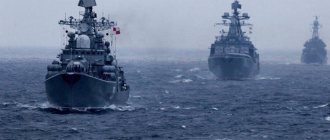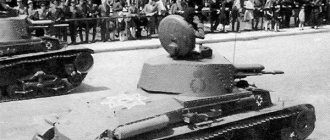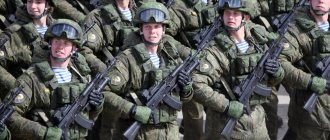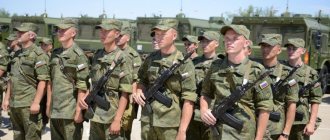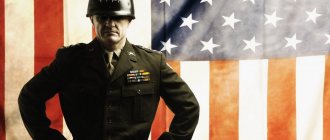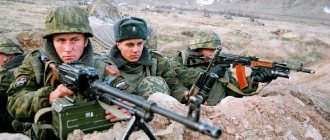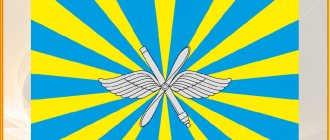Special troops (services) of the Armed Forces of the Russian Federation are special troops and services of the Armed Forces, designed for command, combat, logistics support and solving special tasks.
Formations, units and subunits are part of formations, formations and units of all branches of the Armed Forces and individual branches of the armed forces.
The Special Forces include: formations, units and subunits of reconnaissance, communications, radio technical support and automated control systems, electronic warfare, engineering, radiochemical protection, surveying, search and rescue, meteorological, aeronautical, moral-psychological, logistical and medical support, units provision and protection of military command and control bodies.
Special troops are included in the formations of all branches of the Armed Forces, individual branches of the armed forces and the rear.
Composition of special ground forces
Special troops of the Ground Forces include units and subunits of the following types:
- engineering;
- radiation, chemical and bacteriological protection;
- communications;
- electronic warfare;
- intelligence units and military units;
- information operations;
- rear forces, which consist of railway, road, road and pipeline troops.
In addition, special troops include special units and formations that are not related to any separate troops and perform logistics support tasks.
For example, in each unit there is a formation of material and technical support, a commandant service, a missile and artillery service, a medical service, a topographic service, etc.
Types of the Armed Forces of the Russian Federation
Armed Forces of the Russian Federation (Russian Armed Forces)
- a state military organization of the Russian Federation, designed to repel aggression directed against the Russian Federation - Russia, for the armed defense of the integrity and inviolability of its territory, as well as to carry out tasks in accordance with international treaties of Russia.
A branch of the Armed Forces is an integral part of the Armed Forces of the Russian Federation, distinguished by special weapons and designed to perform assigned tasks, as a rule, in any environment (on land, in water, in the air).
From August 1, 2015, the Russian Armed Forces include the following types of armed forces:
✑ Ground Forces ✑ Aerospace Forces ✑ Navy.
Each branch of the Armed Forces consists of combat arms (forces), special troops and logistics.
Ground troops
Aerospace Forces (VKS)
Navy
History of the creation of divisions
Each branch of the military has its own history of creation:
- The engineering troops consist of support units for troops on the march, in defense and in the offensive. These are engineering sapper troops, road engineering, pontoon and other units. The exact date of creation was lost back in the 9th century AD. That is, this type of army arose along with fortifications and city walls. After all, they had to be built, and if the city was attacked, they had to be destroyed. This is the work that military engineers did. The most striking event associated with the engineering troops was the capture of Kazan. In the 16th century it was a large, well-fortified city, which was impossible to capture from a swoop. Moreover, the Russian troops that approached the walls of the city presented an excellent target for the defenders. There was no place to store supplies, treat the wounded or simply rest, there was also no way. In this regard, a fortress was built on the Sviyaga River, 25 km from Kazan, combining a hospital, warehouses and a resting place for soldiers. And in order to build this fortress quickly and unexpectedly for the people of Kazan, the prepared logs and parts of the walls were lowered along the Volga from the city of Uglich. Thus, the fortress was built in a record 28 days. Around the same period, various engineering structures were developed that saved many soldiers' lives and positively influenced the course of various military companies. For example, the “walk-city” was invented - log shields transported on carts and serving as mobile shelter for cavalry and artillerymen.
- The troops of radiation, chemical and bacteriological protection (RCBZ) began their journey with the First World War, during which toxic substances in the form of gas began to be used. And where there are chemical weapons, chemical protection is also needed. After the adoption of atomic and thermonuclear weapons, it was necessary to ensure the protection of personnel and equipment from the damaging factors of nuclear explosions. RCBZ troops are engaged in reconnaissance of radioactive and chemical contamination, carry out work on deactivation and decontamination of affected areas, military equipment and personnel. They also provide personnel with chemical and radioactive protection equipment, which includes not only a gas mask and a protective equipment kit, but also special decontaminating substances.
- Signal Corps. It is difficult to overestimate the importance of this type of troops. After all, communications is the nervous system of all Armed Forces. They provide command and control of troops at any level: from squads to units and formations. Military signalmen are on duty even in peacetime. After all, during exercises, when other troops are simulating combat operations, it is impossible to imitate data exchange and communications. The use of telegraph communication began during the Russian-Turkish War in 1877. This event marked the beginning of the use of wired communications. Radio communications began to develop with the Russo-Japanese War in 1905, when military radio stations were first used. At the moment, signal troops are represented by dozens of special signal brigades and hundreds of individual companies and battalions.
- Electronic warfare troops perform the task of protecting the radio air from penetration by a potential enemy, and electronic warfare troops also protect their command and control systems for troops and units. The history of the use of electronic warfare began with the Russian-Japanese War, when, by order of the commander of the Pacific Fleet, it was possible to suppress radio traffic between enemy ships by interference, which led to the defeat of the enemy. Work to suppress radio traffic between the headquarters and units of a potential enemy is ongoing. Modern electronic warfare troops cover radio broadcasts from all possible directions.
- Military reconnaissance units initially carried out various tasks in order to provide command with information about the enemy, the state of the terrain and the weather in order to make adequate decisions for the operation (battle) and prevent the surprise of enemy actions.
- The youngest are the information operations troops . The need for their creation is explained by the development of the Internet and network structures of military command and control. The task of these troops is to protect automatic control networks from enemy attacks and influences.
- The rear troops are a multi-level structure that emerged on the basis of the development of means of transport and construction equipment. They include railway troops, which ensure the transportation of personnel and military equipment by rail, road troops, without which the transfer of food, weapons and personnel throughout Russia is impossible, road construction and pontoon formations, as well as pipeline troops.
History of existence
Every year the country celebrates the day of the country's ground armed forces on the first of October. This date was set by order of the Russian government in May 2006. She was not chosen by chance. In 1550, Ivan the Terrible issued a decree that marked the beginning of the formation of regular troops. A hundred years later, Peter I reformed the army by introducing a recruitment system.
During the reign of Alexander I, ministries were established in the country, one of which was the Department of Military Ground Forces. It was under him that a large-scale reorganization began. A new structure was formed, a supply and weapons system was organized. Recruitment was abolished, and military service appeared instead.
The development of engineering communications, transport systems, and the emergence of new technologies have led to a qualitative change in the structure of the troops. The ground units began to include mechanized units and artillery. After the Great October Revolution, ground units of the USSR were created on the basis of the Russian army. In addition to infantry, they began to include various branches of the military:
- engineering;
- tank;
- motorized rifle;
- artillery;
- special.
After the end of World War II, missile forces and air defense were added to them. After the collapse of the USSR, on May 7, 1992, by decree of President B.N. Yeltsin, the Russian Armed Forces were created. The time of reform has begun. Four years later, a professional army was introduced, and a transition to a corps and brigade system was planned. But the participation of the Russian army in various armed conflicts showed the rather low quality of soldier training. Lack of resources did not allow the army to be transferred to a completely contract basis.
The last reform of the Russian ground forces, their composition and purpose was carried out in 2010. Six districts were abolished. Instead, four joint strategic commands were created. In addition to combined arms units, the Air Force (air force), air defense (air defense), and fleet were transferred to their disposal. At the beginning of 2022, the Russian ground forces consist of 12 armies, eight divisions, an army corps and more than 140 brigades.
Formations of special troops
Depending on the level of formation and association, special troops can be organizationally represented in the form of separate companies/batteries, battalions/divisions, or separate regiments/brigades.
The brigade is the largest military formation provided for the organizational structure of special forces.
For example, the formation of special troops carrying out tactical reconnaissance at the level of an airborne division is a separate reconnaissance company, at the level of a motorized rifle (tank) division - a separate reconnaissance battalion.
The special forces unit that produces engineering support (a type of combat support) for a motorized rifle (tank) division is a separate engineer battalion. At the level of a combined arms army, this is a separate engineering and sapper brigade.
Conscript service in special forces
You can get into military service in special forces, but not in the FSB or intelligence service. This is because the FSB special forces recruit candidates from the officer ranks and only with a good recommendation from current law enforcement officers.
Getting into intelligence is also not very easy. The main selection criterion is the presence of a maroon beret.
Upon urgent conscription, a young man can be assigned to the following special units:
- Airborne troops. To get into this type of troops, you must have a mark on your military ID indicating the fitness category “A” or “B1”. If, after enlisting in the troops, a young man shows himself only on the positive side, then he will have a chance to serve in special forces under a contract;
- Marines. For these troops, the same requirements are put forward as for the Airborne Forces. By approaching the service responsibly, you can be noticed by the command and expect to receive an offer for work under a contract.
Armament
It is clear that all special forces personnel have personal weapons. Firearms, as a rule, are Kalashnikov assault rifles for soldiers and Makarov pistols for officers. But each unit also has its own specific weapons, that is, special technical means to perform its immediate tasks.
For signalmen, these are radio stations and entire communication systems installed on armored personnel carriers or trucks, command and staff vehicles. Engineers have various engineering equipment, railway workers have their own trains and locomotives.
The material and technical base of any type of troops is complete, diverse and even, if possible, automated. For example, in the chemical forces, radiochemical reconnaissance vehicles are equipped with special devices for automatically driving in marker pegs. Everything is done so as not to distract military personnel from performing combat missions.
Structure and weapons
Each of the four districts consists of armies, which include divisions, brigades, regiments, battalions, companies and platoons. The smallest military formation is considered to be a squad. Its number varies depending on the type of troops. It is controlled by a junior sergeant or sergeant. All squad commanders are subordinate to the platoon commander, who, in turn, are subordinate to the company commander. A platoon can have from two to four squads.
A motorized rifle squad usually consists of 9-13 people. In departments of other branches of the military, the number of military personnel can vary from 3 to 15 people. Squads may be called differently, for example, in the tank forces of the Russian Federation they are called crew, in missile forces - crew. Each subsequent military unit consists of 2-4 lower formations.
The regiment and brigade belong to operational tactical organizations. A colonel is appointed commander of the units. The division is a step higher. Typically one unit includes main and additional shelves. For example, a motorized rifle unit may have three regiments of specialized troops and one tank, anti-aircraft missile regiment, communications battalion, transport battalion, engineer and medical battalion, chemical company, and auxiliary platoons.
An army is a large operational formation that includes various divisions and brigades. The formation is commanded by a colonel general. Several armies are already forming a district. Thus, the districts include:
- West. The headquarters is located in St. Petersburg. Consists of a tank army, a combined arms army and a guards army.
- Southern. Includes three combined arms armies, the headquarters is located in Rostov-on-Don.
- Central. Formed from the guards and combined arms army. The headquarters is located in Yekaterinburg.
- Oriental. The largest unit, including four combined arms armies and one army corps.
In wartime, instead of a district, the concept of front is introduced. It is never divided by types of troops. The army is armed with: tanks, infantry fighting vehicles, armored personnel carriers, artillery pieces and tactical systems, self-propelled guns, tugboats, anti-tank weapons, and communication systems. The infantry is armed with: machine guns, machine guns, rifles, pistols, grenade launchers, checkers and grenades. In 2022, the Uran-9 robotic complex was put into service.
Holidays
Each type of military has a professional holiday:
- The Engineering Troops celebrate January 21 - this is the founding day of the Pushkar School of His Imperial Majesty.
- Signalmen celebrate their day on October 20, and they were created on this day in 1919.
- Electronic warfare troops celebrate their day on April 15, in honor of the first radio jamming in the Russo-Japanese War in 1904.
- Information Operations troops celebrate their birthday on January 14 and have done so since 2014, in which Russian Defense Minister S.K. Shoigu signed a decree on the creation of this type of troops.
- Railway troops - August 6, trace their history back to 1851.
- Automotive troops - May 29. It was on this day in 1910 that the first training automobile company in the Russian Empire was founded.
- Home Front Troops Day has been celebrated in Russia since August 1, 1941.
Important! On the day of the professional holiday, distinguished servicemen of the relevant troops are awarded medals and valuable gifts.
Emblems
Each type of military has its own emblem, reflecting specific features. Over the decades, as a result of political changes in the country, they, of course, changed, but the main elements remained unchanged.
The engineers' badge depicts an excavator bucket.
For chemists, this is a sign of biological and chemical danger, recognizable all over the world - three rings connected in the form of a trefoil and pierced in a circle by a fourth ring.
Signalmen have crossed lightning bolts and wings on their buttonholes and chevrons.
The electronic warfare troops have a dark shield with a picture of the Earth on it, against which there is a fist squeezing lightning.
On the chevron of the electronic warfare troops there is a double-headed eagle and St. George, the patron saint of military personnel.
The railroad chevron features a bridge element, a railroad wheel, crossed sledgehammers, and wings.
Motorists wear an emblem consisting of twin wheels, a steering wheel and fenders.
On the uniform of the pipeline troops there is an emblem containing a pipe element with a valve axle box and valve.
Opportunities and purposes
The land army is a structural element of the military organization in the country. It is designed to ensure security, protect sovereignty and integrity. The main purpose is the defense of the territory of the Russian Federation from external aggression in the event of a large-scale war. In fact, this is the basis of the entire army, the first to take battle with a possible enemy.
A flaming grenada against a background of crossed swords was adopted as a small emblem of the troops. The middle one is a double-headed eagle holding a sword in one leg and a grenade in the other. The large coat of arms depicts a wreath - the emblem of the armed forces of the Russian Federation, in the lower part of which there is an inscription on a ribbon: “GROUND FORCES”.
The main tasks of the troops may change depending on the situation. There are three types of periods:
- Peaceful time . Troops are required to maintain their combat capability, conduct exercises and train reserve forces. They can be part of various peacekeeping missions and be involved in eliminating the consequences of man-made disasters.
- Threatened situation . If there is a high probability of a threat, troops are transferred to a special position. At this time, mobilization occurs and the volume of training for reservists increases. Units are being redeployed to the site of the invasion and a control headquarters is being deployed.
- The beginning of the war . The units suppress enemy firing positions located on the ground, clear territories after the work of adjacent armies, and repulse airborne attacks. Territorial defense is being carried out, enemy bases, headquarters, and warehouses are being captured.
To increase maneuverability and speed of response, four military districts have been created in Russia. According to experts, more than 400 thousand people serve in the ground units. The Russian Ministry of Defense does not disclose the exact figure. The main strike unit consists of tank troops. The ground army has about 2,700 tanks at its disposal, the vast majority of which are T-72.
About 3,600 units of rocket launchers and about 4,500 artillery pieces and self-propelled guns have also been put into service. In addition, the Russian army has at least 21,500 armored vehicles.
Interesting Facts
The most recognizable electronic warfare antennas, which, for your information, are classified strategic objects, were the antennas of over-the-horizon radar stations in Chernobyl. They appeared in reports from the scene of the tragedy after the explosion at the Chernobyl nuclear power plant, and subsequently they were beaten in the computer game “Stalker”. Thanks to this, citizens learned what electronic warfare troops are.
Another interesting fact is that they prefer to recruit military personnel no taller than 150 cm into the pipeline troops, since here people work underground, in cramped tunnels.
By the way, it was the pipeline troops that prevented Crimeans from dying of thirst after the Ukrainian authorities cut off the supply of drinking water to the peninsula in 2014.
